Why Metadata Is Your Money (Not Just Admin)
Here’s the nightmare: a 12-second snippet of your track blows up on TikTok. Streams spike. Playlists add it. But your payout stalls because the recording ID was wrong, the work ID was missing, and your distributor couldn’t match the two. Weeks pass; money leaks. That’s not a hypothetical—we fix messes like this every month.
In 2025, streaming is the whole game. In the U.S., streaming accounts for about 92% of total music consumption. When the ecosystem is that digital, clean identifiers aren’t red tape—they’re your royalties pipeline. (Source: Luminate Midyear, 2025)
Need ready-to-rap instrumentals? Explore our latest rap beats hand-picked for punchy flows.
Metadata affects: discovery (algorithmic and editorial), playlisting eligibility, chart rules, royalty routing (recording vs composition), takedown defense, fraud prevention, and even artist page hygiene.
Related deep dives on our site: Spotify algorithm guide, AI mastering file prep.
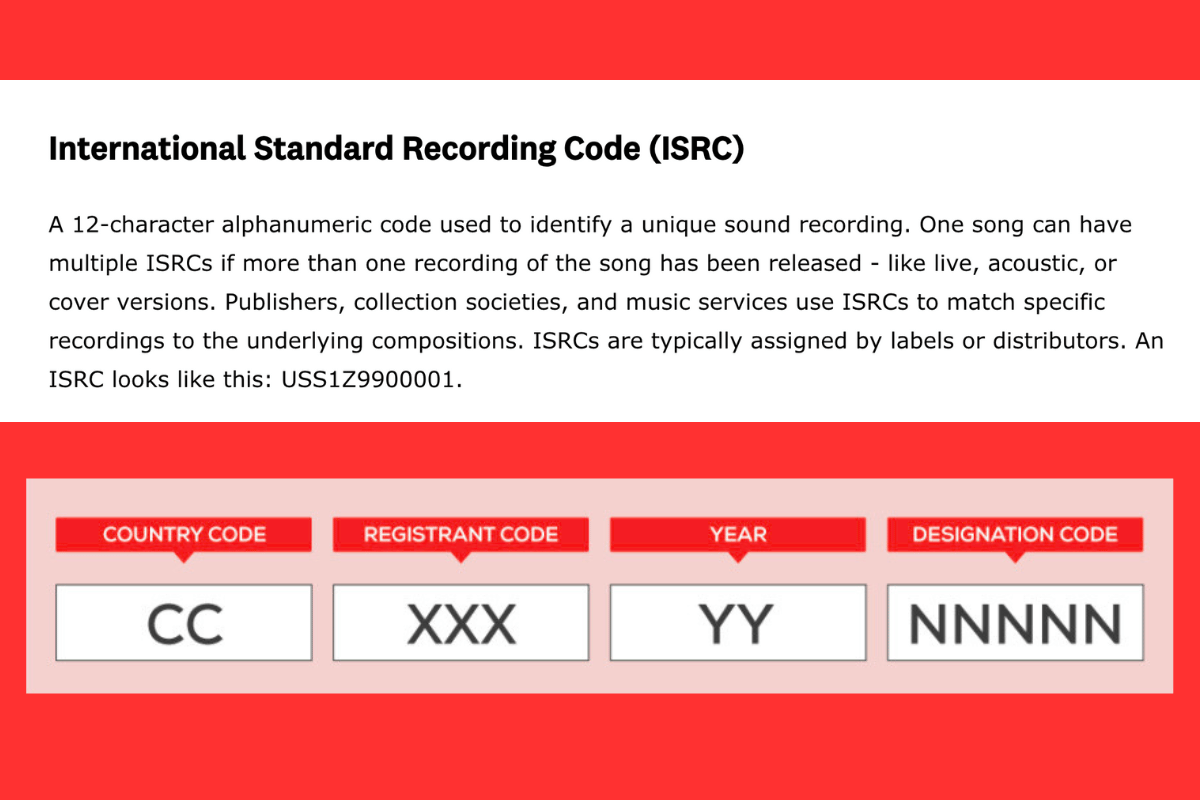
The Four Identifiers You Must Get Right
ISRC (the recording ID)
What it is: ISRC (International Standard Recording Code) uniquely identifies each sound recording or music video. Think of it as your master’s license plate. You (or your label/distributor) assign it. Assign it before you deliver. Check existing codes in the IFPI/SoundExchange database.
Before you record, run your demo through the free online BPM analyzer to lock tempo.
When to re-use vs mint new: If the audio is materially changed, mint a new ISRC. That includes different mixes/edits, radio edits, live cuts, immersive/surround mixes built from the stems, or remasters with significant creative input. Minor metadata tweaks without audio change typically don’t require a new code. (See IFPI ISRC Handbook)
Lookup & hygiene: Search the international ISRC database (powered by SoundExchange). Keep a local master spreadsheet of your codes tied to final approved WAVs, not working files. Deliver one ISRC per distinct recording to every DSP and rights org you touch; avoid “code drift.”
Related read: stems vs. new recordings in our Demucs deep dive.
ISWC (the composition/work ID)
What it is: ISWC (International Standard Musical Work Code) identifies the composition—lyrics and music. It’s issued by your PRO/CMO via CISAC systems (e.g., APRA AMCOS in AU/NZ). You don’t buy an ISWC; it’s minted once the work is properly registered with correct writers and splits.
Why the ISWC ↔ ISRC link matters: Linking the song (ISWC) to every recording (ISRC) before release is the single biggest way to speed up accurate, global royalty matching. CISAC and PROs have active programs to push this link at ingestion time.
Where to confirm: Use your PRO portal (e.g., APRA AMCOS Writer Portal) to add known ISRCs to your work registrations and claim works early. Typical assignment windows are fast if splits/IPIs are in place.
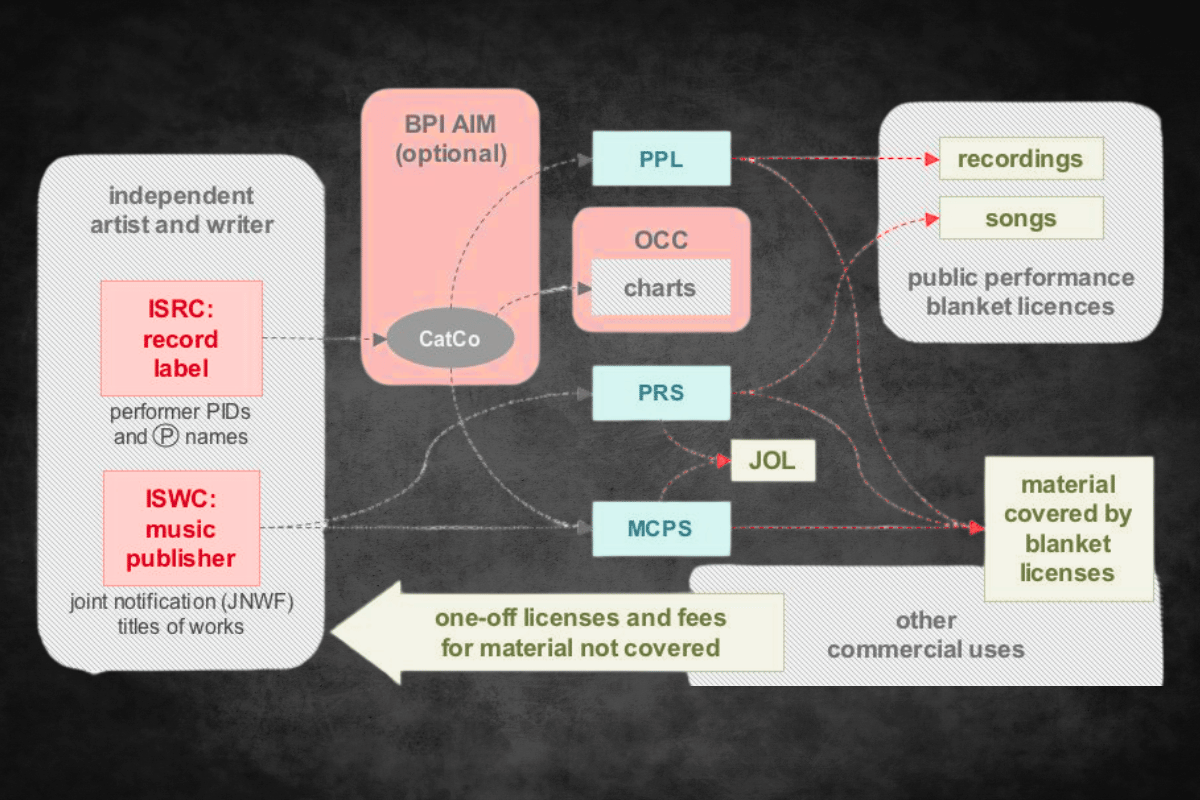
UPC / GTIN (the release/container ID)
What it is: UPC (a type of GS1 GTIN) identifies the release container—single, EP, album, deluxe, bundle. If the consumer-facing release changes in a way that distinguishes it from prior versions (e.g., new edition, bonus tracks, altered configuration), it needs a new UPC. Use your GS1 prefix or distributor-issued GTINs; don’t recycle UPCs across different tracklists.
Related prep checklist: Releasing your first song.
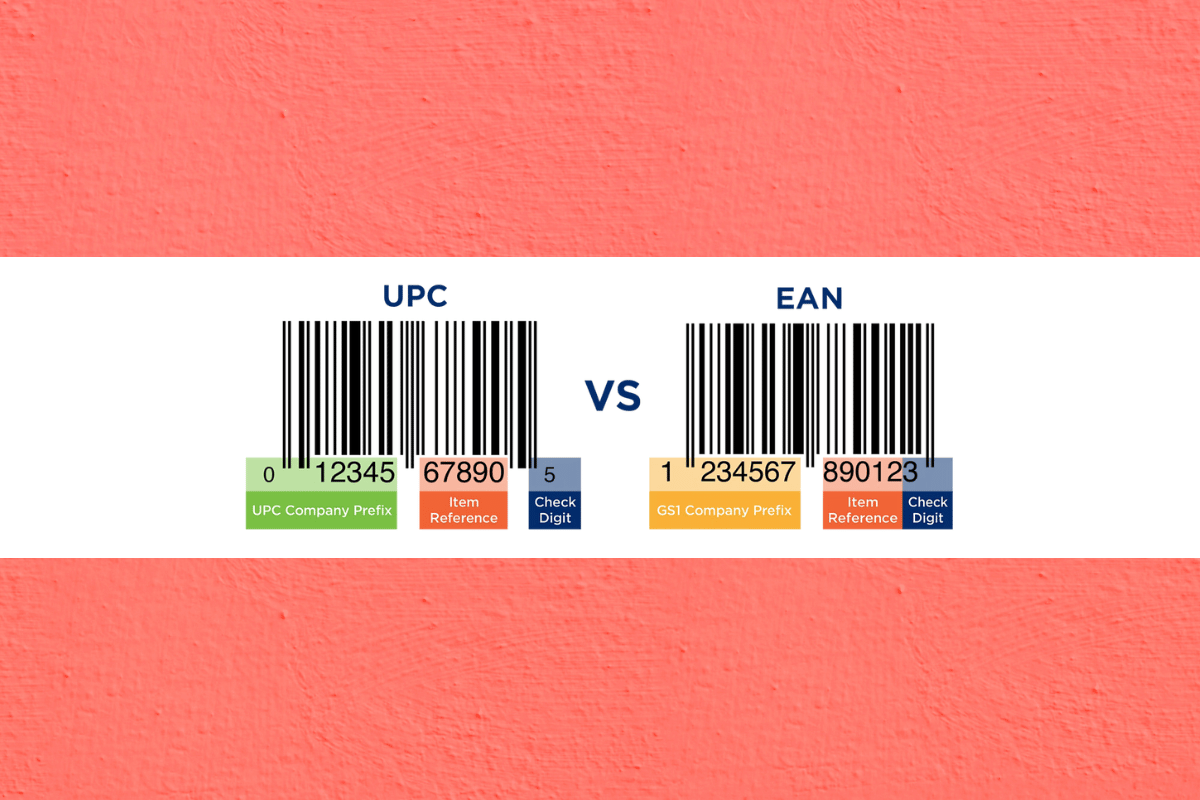
DDEX (the language/pipes the industry speaks)
What it is: DDEX standards define how labels and distributors communicate release and rights data to digital services. For music delivery, the **ERN 4.x** message suite is the workhorse; in the studio, **RIN** captures session credits at the source.
2025 reality: DDEX is retiring older materials and steering implementers to current ERN 4.3.x. If your supply chain still relies on ERN 3 or early ERN 4, plan your migration and Schematron validation now to avoid failures and rejections.
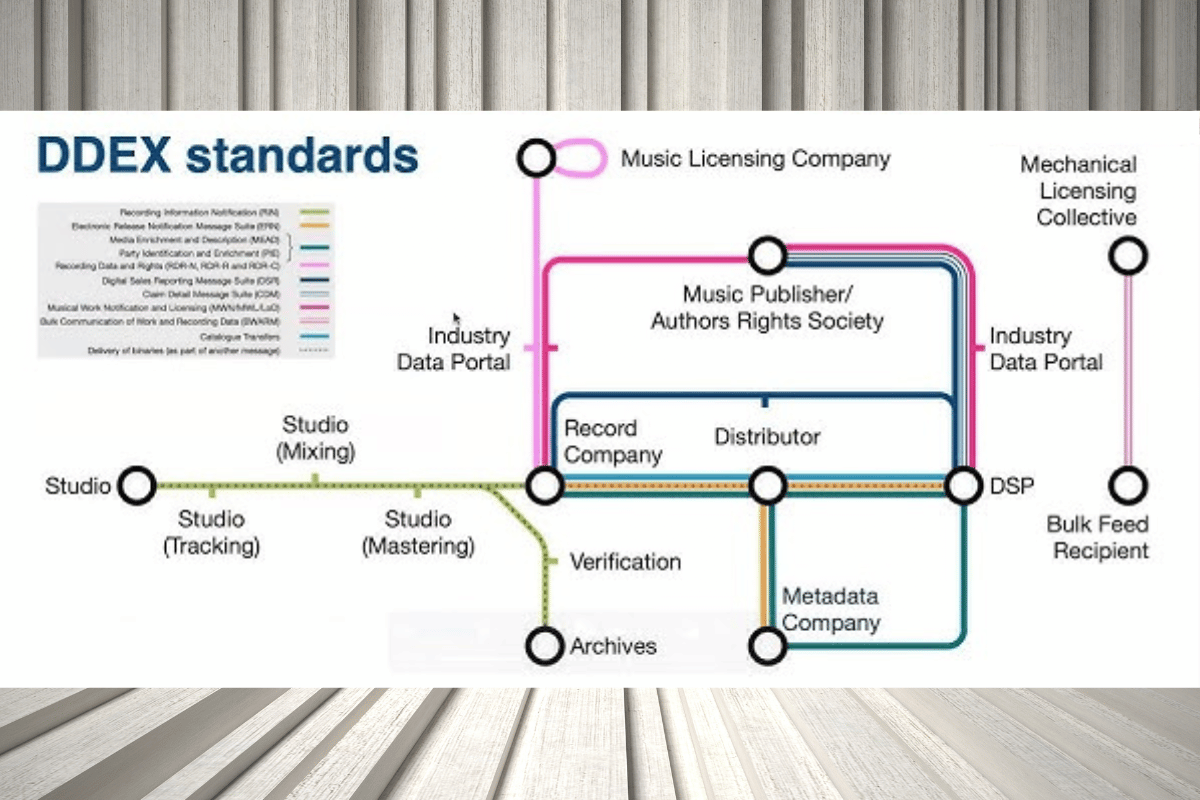
The Canonical Map (How IDs Fit Together)
Picture three layers: Work (ISWC) → Recording (ISRC) → Release (UPC/GTIN), with DDEX carrying your messages between companies. A fourth identifier, your IPI (your songwriter/publisher ID), anchors who gets paid on the composition side and ties to ISWC records.
Need clean acapellas or drums? Split any track in seconds with the AI Stem Splitter.
Two practical rules: (1) every distinct audio recording gets one ISRC; (2) every distinct retail release gets one UPC; (3) the same ISWC can link to many ISRCs (radio edit, live version, remix).
Platform Reality Check: Spotify / Apple / YouTube
Spotify: the tripwires
Spotify publishes exacting metadata conventions (titles, roles, version strings, “feat.” formatting, capitalization, explicit flags). If you get this wrong, your content can be delayed, suppressed, or bounced back for fixes. Your distributor’s style checks should mirror Spotify’s rules, but don’t rely on that—validate your own titling and roles.
Turn your hook into a scroll-stopping clip with the AI Reel Maker—beat-synced and social-ready.
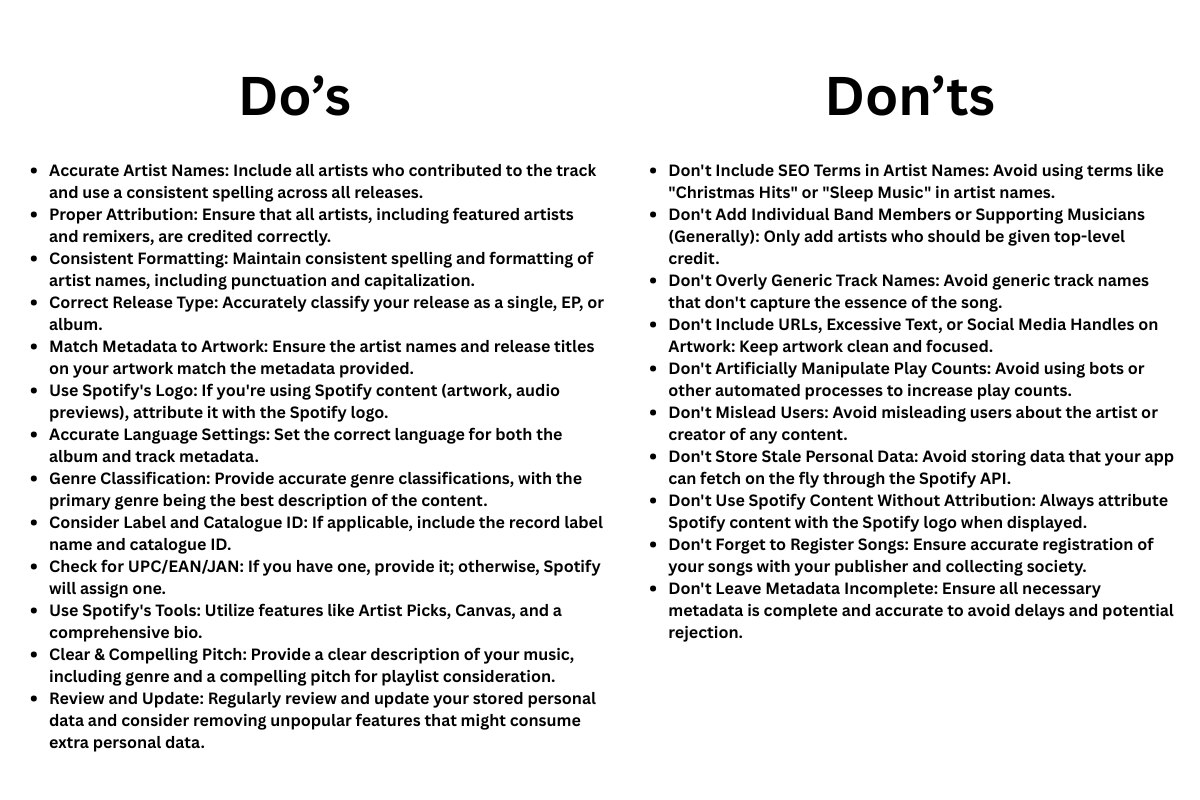
Apple Music & YouTube: basics worth getting right
Apple’s style guide is strict on title casing, version indicators (e.g., “Remix”, “Live”), role accuracy, and artwork consistency. YouTube’s systems rely heavily on correct ISRCs to bind art tracks to sound recording assets and preserve metadata history. If you’re consistent across deliveries, most platform glitches vanish.
Field Guide: Zero-Error Release Workflow
Pre-studio (RIN mindset)
Capture credits and splits at creation, not after the bounce. If your DAW or a plug-in supports RIN export, use it and stash the .rin file alongside your multitracks. Record full names, roles, IPIs, emails, and publishing shares. Don’t forget producer points and session players.
Meet collaborators, producers, and curators inside the Creators Network—it’s free to join.
Pre-distribution checklist
- Assign ISRCs for every track (final masters only). Lock a master sheet.
- Register the work with your PRO (writers, splits, IPIs), get (or await) ISWCs.
- Link known ISRCs to works in your PRO portal if possible.
- Mint a UPC/GTIN for the release. New edition = new UPC.
- Audio QA: sample rate/bit depth, peak/true-peak, loudness. See our LUFS guide and Spotify loudness 2025.
- Art QA: dimensions, safe areas, no extraneous text that violates platform rules.
Delivery & QA
- Confirm your distributor supports current DDEX ERN 4.3 profiles.
- Validate your packs (dates, roles, territories, explicit flags, rights). Schematron failures are avoidable with preflight.
- Post-ingestion: check your artist pages for merges, title casing, and featured roles. Fix via distributor tickets early.
- Register non-interactive royalties (e.g., SoundExchange in the U.S.) and claim recordings where applicable.
Fraud, Clones & Takedowns (and How Metadata Defends You)
Imposters and leak accounts thrive where identity and credits are weak. You can’t prevent every bad actor, but you can make your data defensible: consistent identifiers, distributor-locked catalogs, fast takedown proofs, and public verified credits via Jaxsta or similar.
Quotes From the Trenches
“Bringing together the ISWC and ISRC at the point of release of a song has a huge potential for creators and rights holders and would be a giant leap forward for the industry as a whole.”
—Gadi Oron, Director General, CISAC (Source: CISAC/PRS for Music, 2023)
“Essentially, the Creative Passport is a simple thin layer where you decide: I’m going to create the digital me, a home for me.”
—Imogen Heap (Source: TIDAL Magazine)
2025 Market Context: Why Clean Data Pays Right Now
Streaming volume keeps growing (globally and in the U.S.), but growth rates are normalizing and catalog is powerful. That amplifies the importance of data hygiene—because payouts follow the best-matched data, not always the best music. (Source: Luminate Midyear, 2025)
Copy/Paste Checklists & Templates
One-page “No-Mistakes” Metadata Checklist
- Works: Writers, splits, IPIs confirmed; register to mint ISWC; add ISRCs where portal allows.
- Recordings: One ISRC per master; new mix/edit/live/remix = new ISRC; log codes in a master sheet.
- Releases: New edition/bundle/deluxe = new UPC; align tracklist orders across all deliveries.
- Credits: Capture in RIN (roles, instruments, producers, engineers). Export and store with session.
- Delivery: DDEX ERN 4.3 profile; Schematron clean; titles/roles/version strings match platform style.
- Audit: Live check on Spotify/Apple/YouTube; fix merges; claim recordings with your PRO and SoundExchange (where relevant).
Troubleshooting Matrix
- Track live under the wrong artist page: Open distributor ticket with your correct artist URI + UPC/ISRC proof; request page split/merge.
- Duplicate ISRC in the wild: Confirm the “canonical” master; re-deliver with correct code; supplier request to DSP to de-dupe.
- Mismatched UPC vs tracklist: Withdraw and re-deliver with new UPC; update downstream databases to avoid ghost releases.
- Work unclaimed by PRO: Register ASAP; add ISRCs in your portal; ensure all writers have IPI and accepted splits.
FAQs
Do I need a new ISRC for a remaster?
Usually no—unless the remaster involves significant new creative input that materially changes the audio. When in doubt, consult the ISRC Handbook.
How do I find an existing ISWC?
Search via the ISWC portal or your PRO’s works database, or check your own registration records.
Can I reuse a UPC for a deluxe edition?
No. A new edition that consumers would distinguish (extra tracks, different configuration) requires a new UPC/GTIN.
Conclusion
Great songs die in bad data. If you lock ISWC/ISRC/UPC correctly and deliver via current DDEX, you’ll ship clean, get found, and get paid. Treat metadata like masters: label, log, back it up, and run QA.
Download the Release Metadata Checklist (CSV)
Fact-check policy: we cite primary standards bodies (IFPI, CISAC/ISWC, DDEX, GS1) and platform owners (Spotify/Apple/YouTube). For market stats, we prefer Luminate/IFPI. Contact info@beatstorapon.com for corrections.
